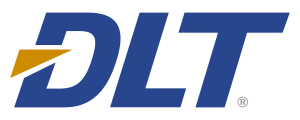This blog post is an excerpt from GovLoop’s recent guide, “Your Roadmap to IT Modernization.“
Going into 2017, government still has many concerns surrounding IT modernization and security. And those concerns aren’t going to diminish. As more agencies look to modernize their IT infrastructure, many run into challenges with increasing complexity surrounding compliance, authentication policies and vulnerabilities in their networks.
Rather than addressing these challenges through patchwork solutions and disparate IT systems, agencies should consolidate their IT solutions, platforms and infrastructures. In an interview with GovLoop, Joe Kim, Global Chief Technology Officer at SolarWinds, explained the benefits of IT consolidation. He also explained what agencies should do to get started in their modernization efforts with five simple steps as well as tools from IT operations management (ITOM) to help. SolarWinds partners with DLT to offer IT management and monitoring solutions for IT consolidation.
With disparate IT systems, many agencies run into challenges managing authentication, authorization and a variety of security tokens. Managing all of these independent processes, tools and platforms can get pretty complicated.
“When you don’t centralize your IT modernization efforts, not only is it less efficient, but it leaves your systems vulnerable,” Kim said.
Kim explained that with consolidated IT services, agencies can use new platforms to better organize data and combat cyberthreats. This is because consolidated IT means fewer systems to monitor and the ability to quickly identify and address cyberthreats, as well as any issues in applications and infrastructure.
“Modernizing and consolidating ensures that you know the specifics around hacks and that they’re quickly getting addressed by whoever’s supporting your platforms (internal employees or vendors),” Kim said.
With consolidated IT, agencies don’t have to worry about disparate software or applications not complying with certain standards. Having tools and solutions centralized means greater availability of applications and improved compliance.
To get started with IT consolidation and optimization, Kim recommended five steps for agencies to use in their modernization efforts
1. Define the scope. Understand at multiple levels what your agency is trying to achieve. Then start deep diving into technology products and services.
2. Perform an inventory. Find the baseline of your agency’s IT resources. Take the time to find what you already have in place, specifically regarding tools, policies and procedures. Then, start to understand where you need to go to reach a desired end state.
3. Conduct a needs assessment. Look for what tools will drive the most efficiency in your agency’s modernization project based on the inventory’s findings.
4. Look outside the agency. Research what the market standards are regarding tools and services. Consider hybrid cloud infrastructures of different products for shared services. Who are the players and what are the differentiators between IT solutions? Have a set of prioritized features and functions that your agency must cover and assess vendors accordingly.
5. Move forward. Identify what can be achieved most quickly from steps 1-4. Then focus on one thing at a time and build on that. Minimize transitional states in modernization to avoid the process becoming complicated, costly and unsecure.
In addition to these five steps, agencies can also use solutions like ITOM tool integration to help consolidate IT systems and address any lingering security challenges while still realizing the benefits of modernization. ITOM stands for IT operations management.
ITOM includes tools to help manage provisioning, capacity, performance and availability within the computing, networking and application environment. For example, with ITOM tools like AppStack, you can reduce systems downtime with a single view into an agency’s entire application stack. This allows IT staff to quickly identify the root cause of application issues within a unified dashboard as well as provides full visibility into the performance of the environment across all layers.
Another example of ITOM in government would be integrating ITOM tools into an agency’s helpdesk system. Helpdesk integration unifies IT management and support allowing streamlined ticket creation and assignment. This helps notify network and systems admins of infrastructure issues and automate help desk ticket creation, which allows technicians to resolve any issues faster.
Ultimately, agencies can improve their modernization projects by consolidating their IT solutions with the help of ITOM and the five-step strategy. Not only will consolidation help with modernization efforts, but it will also address concerns around security while improving efficiency and cost-savings.







Leave a Reply
You must be logged in to post a comment.